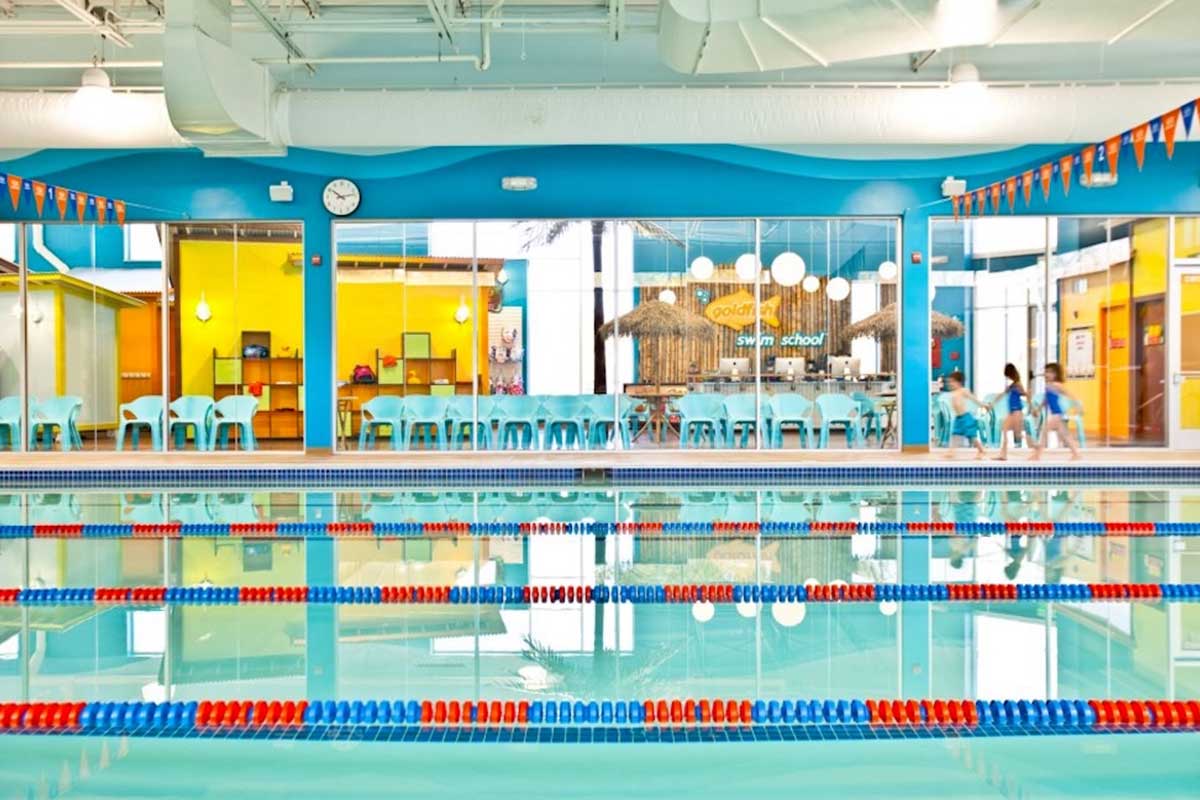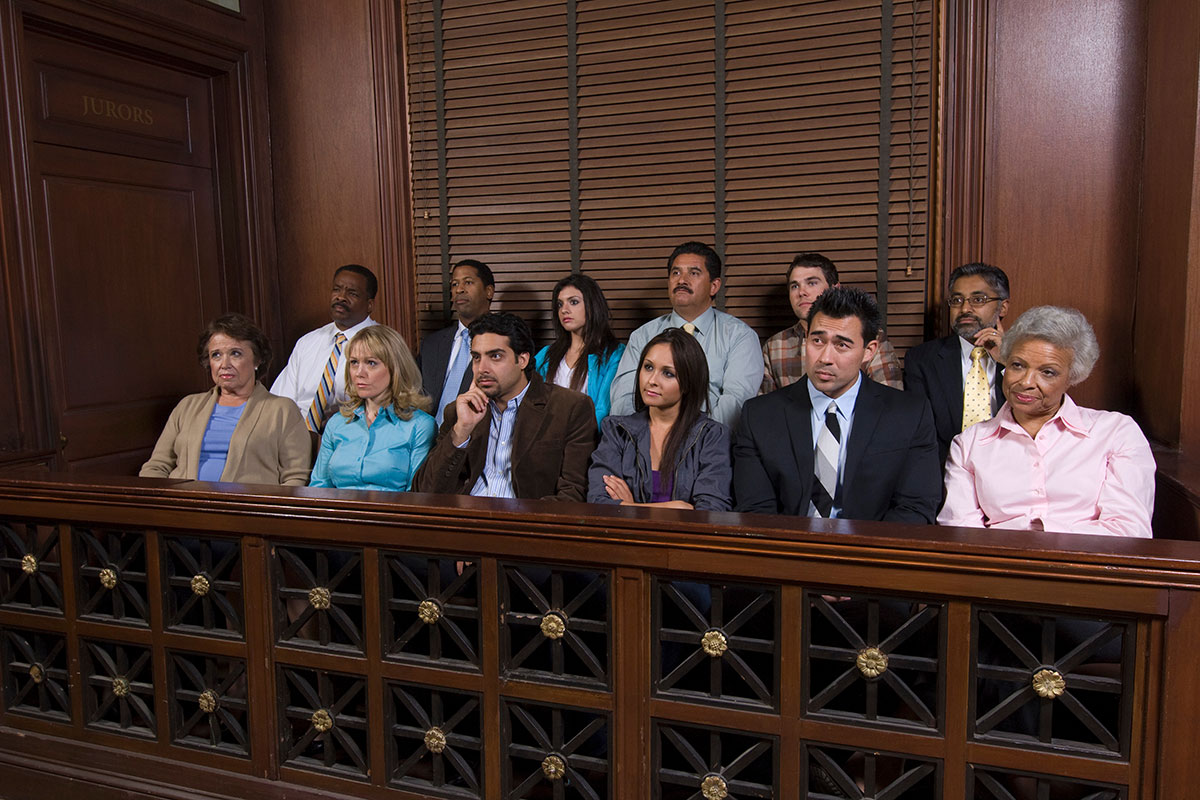
If there’s a sure sign that summer has officially started, it’s the first cannonball taken by a kid launching into a backyard pool.
Despite the global pandemic closing most local, public pools—other than outdoor lap pools, which are now permitted in Northern Virginia under phase one restrictions—kids are still going to be swimming this summer, whether that’s in backyard pools, local lakes or other bodies of water.
Here, we caught up with Gina Bewersdorf, the owner of three Goldfish Swim School locations in Northern Virginia, about what you need to know to make sure your child is swimming safely this summer. Find highlights from our conversation below.
With summer coming up and more kids headed to the pool this summer, why is water safety important for children to know and for parents to be aware of?
Swimming is something that everybody needs to know how to do. Everybody. At some point, we will be exposed to water, whether it’s on vacation, whether there’s a pond in the backyard, whether somebody is, unfortunately, left in a bathtub unattended. In our country right now, there are about 10 people that drown per day, and about 3,500 people a year (from 2005 to 2014), according to the Centers for Disease Control and Prevention. And drowning is the leading cause of death in children between the ages of 1 to 4 years old. So, swimming is essential.
How old should children be when parents start getting them used to the water, or enrolling them in safety swim lessons?
Thankfully, last year on May 15, the American Academy of Pediatrics came out with revised drowning prevention guidelines. One thing at the top of the list was to enroll your child in a dedicated kids swim lesson by the age of 1 year old. That was found to be an effective layer of drowning prevention. That guideline has really shaken some people to the core, right? Because it really gives us this moment to just say, OK, this is a great way to provide my child some lessons and now that it’s been substantiated, it’s not just for fun, it’s not just for fitness, but it’s to potentially save a life.
At Goldfish Swim School, we provide swimming lessons beginning at 4 months old. Our classes from 4 months old to 2 years old require a parent to be in the water with a child. It’s a team. In those classes, it’s imperative to get the child familiar with water in a safe environment and not be afraid to go under the water or to have water poured on his or her head.
What do you tell parents who might be nervous about starting their child in lessons or swimming at such a young age?
Sometimes you’ll have parents that say, “Well, my child is not going to learn to swim at 4 months old.” The thing is, no, probably not. No one is saying your child is going to win a swimming race at 4 months or 7 months old, but what we are saying is that if we can teach your child how to float on their back when they’re under 1 year old, that’s the beginning of a life-saving skill. We have kids who are 7 and 8 months old who can float on their backs, which is amazing and I’ve seen it with my own eyes. What if your child falls in the water and knows exactly what to do? They know that they flip on their back and hang out there and float. This is a necessary, essential safety skill to empower your children, which is much easier to do when they’re still young. That way when they’re 4 and 5 years old, they’re not fearful of what’s about to happen [when getting in the water]. It’s just like riding a bicycle with a helmet on. You wear a helmet when you ride a bike, and you need to learn how to swim.
What are a few other go-to skills that parents should be aware of that they’re children should learn?
Certainly floating is the most fundamental skill to learn how to swim. But we also teach how to flip on your back, so when you fall in the water, the goal is to get on your back and just hang out there and float. We also teach the kids how to go under water, so it’s not a panic situation when they do go under the water. We teach them to get out of the water, which again, in a moment of panic such as falling off a dock or falling into a body of water, the goal is to turn and get to the edge. It may sound sort of silly, but in a moment of panic, if you haven’t been empowered with the notion of what to do, then I think your chances of actually doing something to save your life are pretty slim.
What is the most rewarding part of seeing children learn how to swim, no matter their age?
I’ll speak as a mom and as an owner of a swim school: Watching my children learn how to swim was so much fun, and it was so rewarding; I finally felt safe. I know that sounds silly, but I grew up around pools and didn’t know how to swim. I was so afraid of the water, like deathly afraid of the water, and I always said my kids need to know how to swim.
I got brave and learned how to swim at 39, in order to do a triathlon for my 40th birthday. I needed to learn how to swim because I felt that would be the boldest move of my life, right? I learned as an adult, and learning how and watching my kids do it made me realize even more of the importance and the gold standard Goldfish Swim School sets for lessons. Everyone needs to know how to swim, and that’s why we opened locations here in Northern Virginia, because it would be something we would be incredibly proud of.
Also, it’s thrilling to watch the progress of the kids. It’s thrilling to watch some of the kids who have gone all the way through our program and have done what we call “swim force,” which is like our swim team. Then I’ll get an email that they’re on their neighborhood swim team or club team, and it’s so cool. I’m grateful every day that this is what we get to do.
Once Goldfish Swim School locations are permitted to reopen in Northern Virginia, what safety precautions will the staff be taking in the era of COVID-19?
I can tell you we are going to follow all of the local and state guidelines, and all of the recommendations by the Centers for Disease Control and Prevention. Obviously, it’s easy to social distance places like our lobby, putting chairs 6 feet apart. But now we’re going to have to limit one member per family to be with their child, everyone within the “dry side” of the facility will be wearing masks and everyone in the water will have face shields on.
Safety comes first for our team, for their families and for our guests. It’s tough to know exactly the right thing to do. It’s a slippery slope. We have to teach swimming lessons because people are dying from drowning, but yet we have to respect COVID-19 and be safe about it. Wherever those lines intersect, you know, getting back in the water as soon as possible and being as safe as possible, that’s where we’re going to be at when we open.
What are you looking forward to most about getting kids back in the water (or in the water for the first time) at Goldfish Swim Schools this summer?
I’m really looking forward to getting everyone back in the water and feeling like we’re doing something productive. Of course trying to help people learn to swim and trying to get people comfortable in the water, but also giving people the physical and mental space to be able to go out and enjoy their children being there, and allow these kids to not have this pressure of being home. I’m really looking forward to being productive and doing something with my days other than worrying and trying to reinvent every scenario that the CDC might throw at us.
If parents are starting to get their children familiar with the pool/water at home this summer, what are some dos and don’ts they should be following?
I think the No. 1 don’t is don’t leave your child unattended near water. If your child is in the water, be within arm’s reach. If you are going to be someplace with water, play with them, make it super fun, allow them to go underwater at their leisure and put some goggles on them. Have your child get used to wearing those so they can see underwater. If you don’t have a pool or water near you, just pouring water over your child’s head to get your child used to water dripping on their face is a huge deal. But the biggest thing I can’t press enough is to do not leave your child unattended for a second.
For more family-inspired articles sent straight to your inbox, subscribe to our weekly Family newsletter.




